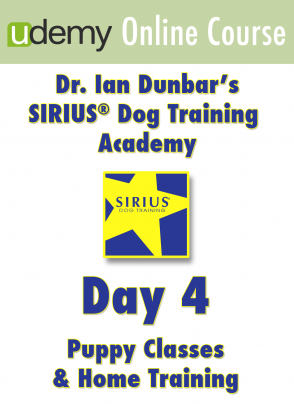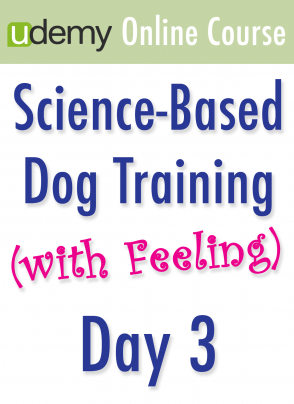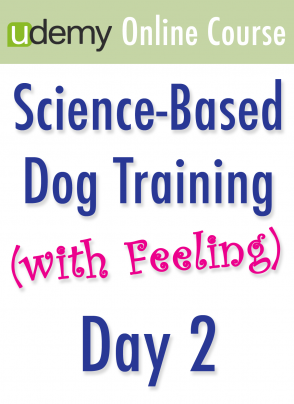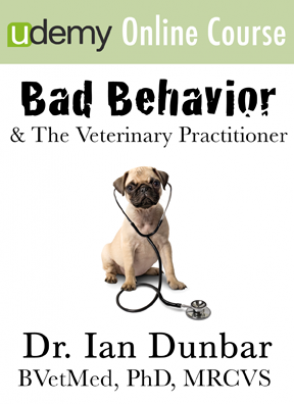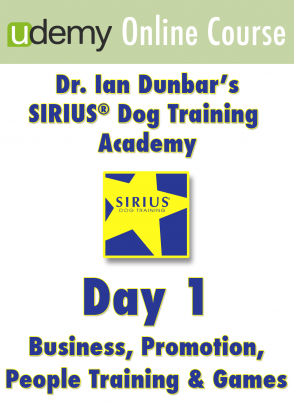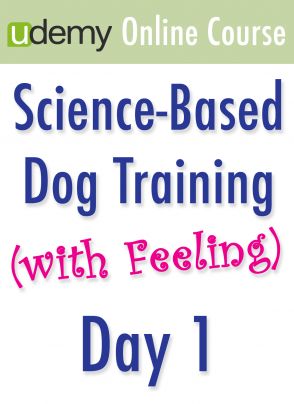Day 4: Puppy Classes & Home Training
How a Radio Show Changed How We Train Dogs Forever
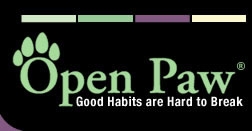
Eighteen months ago, I was driving from Heathrow Airport to the farm in Hertfordshire on Christmas Eve, when I heard Kelly’s voice come over the car radio. She was talking about sheltering and rehoming dogs. A decade beforehand Kelly saw major problems with the existing shelter model and so, provided a solution … Open Paw. www.openpaw.org
Open Paw transforms shelters into a cross between a Canine University and a Canine Country Club, so that resident dogs (and cats) enjoy their stay while receiving an education, and hence, are more likely to be adopted and stay adopted.
Instead of feeding from bowls, the majority of the food is stuffed into Kongs and the rest is handfed during Classical Conditioning and teaching basic manners.
Each piece of food extricated from a chewtoy, reinforces the dog for: 1. chewing chewtoys, 2. lying down and 3. being quiet. The process is lightning fast. Within just a couple of days, hyperactivity (number of steps) and the number of barks are reduced by over 90%.
Food is used to classically condition dogs to love the presence and actions of people, especially strangers, men and children.
Food lures and rewards are used for housetraining and to teach dogs to sit and shush whenever anyone approaches the cage, to remain sitting while a person enters the cage to affix a leash, and to walk calmly on leash to an off-leash meet-and-greet or play area. Dogs are much more likely to be adopted if they present themselves calmly and quietly (with a take-me-home gaze) to potential adopters rather than confronting them with a barrage of barks and bounces in a smelly cage smeared with skidded urine-soaked feces. And yes, the dogs are also trained to make imploring eye-contact with passersby.
Within just a couple of days of implementing an Open Paw program, shelter staff notice that the kennel atmosphere is altogether calmer and quieter, (less stressful for animals and people alike) and a much more enjoyable workplace. Additionally, employees find themselves with more free time on their hands. A large proportion of the shelter day is spent cleaning kennels. No longer. There is no pee or poop to clean; the resident dogs are now housetrained!
This all sounds so easy. And it is. Amazingly though, Open Paw, or similar shelter behavior and training programs have only been adopted by very few shelters. This I simply cannot comprehend. Not housetraining shelter dogs is nearly as silly as breeders not housetraining, chewtoy-training, safely socializing and teaching basic manners to puppies in the first place. Unsuspecting owners are all too often behind before they start. Insanity!
Lack of time, funds and personnel are often cited as major reasons for not being able (willing) to implement behavior and training programs in rescues, shelters and humane societies. Housetraining though, does not require much time. Rather, NOT housetraining domestic animals is the all-time biggest time-waster in animal husbandry, whether we are talking about cats and dogs, or horses and cattle. (When I was a teenager, I trained an entire herd of dairy cows to eliminate on cue, which, I estimated, saved me at least three hours of shoveling each day).
Lack of personnel (funds for payroll) appears to be the major limiting factor. Open Paw deftly solved this by showing how easy it was to create massive volunteer bases for each shelter. The Open Paw program is all about volunteers, oodles of them. Training volunteers how to train the animals, so that shelter workers may devote their time to people-education and management roles. A shelter should not just be a place where people only go to surrender or adopt an animal, rather it should be a festive community center, where people may come to socialize and play with (train) the cats and dogs and to socialize and natter with each other and enjoy refreshments — a coffee bar, ice-cream parlor with cats and dogs.
Some volunteers spend several hours at the shelter and others just a few minutes. For example, housetraining volunteers only need visit the shelter for ten or twenty minutes or so, on their way to work, during the lunch hour, on the way home from work, or late in the evening so that all dogs get four toilet-trips a day and are handsomely rewarded for doing the right thing in the right place at the right time. It is just so much easier to rehome housetrained dogs. (I fondly remember when I used to tag along with Kelly for the Saturday evening housetraining sessions. Always a hard time-slot to fill. But it was a blast! The entire kennel de-peed and de-pooped in less than half an hour.)
Sheltering should not be limited to caging animals until hopefully rehomed. Sheltering simply must adhere to Open Paw’s Minimal Mental Health Guidelines for caged animals and cater to their four fundamental psychological needs: education, entertainment, comfort and companionship. Education comprises preventing/resolving behavior and temperament problems in addition to teaching basic manners. Otherwise, chewing, barking, soiling, hyperactivity, inattentiveness and fearfulness will all likely increase dramatically in the shelter. For example, without regular toilet opportunities, even housetrained dogs will be forced to soil their living area after being surrendered to a shelter. Sheltering should be about troubleshooting existing problems and making animals more adoptable.
Sheltering should not be limited to adoption at all costs. The number of animals that go to new homes (leave the shelter) is often a misleading measure of success. A successful rehoming comprises a dog still being in the newfound home at least a year after adoption. Potential adopters need objective information prior to adoption and then, follow-up, support and education afterwards. An adopting family needs to know “the facts” — a comprehensive behavior, temperament and training evaluation, a progress report vis a vis speed and effectiveness of ongoing training/rehabilitation, an objective prognosis (in terms of required time to resolution), plus guidelines for how to proceed. Certainly some shelter dogs are problem free. But others have problems. It is so important that prospective adopters are aware beforehand, for example, that their choice is not housetrained, or is fearful of men, strangers, or children, and, that they be given a training plan. In addition, it is vital that adoptions are followed up the next day (to check for problems and provide advice if necessary) and then after a week, a month, six months and a year. When adoptions fail, they usually fail early on. Early intervention is the key. After a year, “Well Done!” Mark it in the win column. But who is going to conduct the follow up? Why, volunteers of course.
Sheltering should not be limited to “second chances” but should focus instead on “First Chances”, so that, as Kelly says, “puppies remain in their original homes and are not abandoned or surrendered to shelters as adolescents”. It cannot be denied, that all (ALL) shelter/rescue dogs were once perfectly normal puppies simply begging for the education that they deserved — a first chance — so that they could enjoy their lives living with the people that they love … for life.
We often bemoan that people take their dogs to trainers too late and to shelters as a last resort. But who’s to blame for that? It is just so easy to blame “irresponsible” owners. But who’s going to tell them what to do? Shouldn’t the dog professions be more proactive about providing preventative behavior and training advice to prospective and new puppy owners. Of the five pet professions (breeders, pet stores, veterinarians, trainers and shelters), which has the largest mailing lists (for promotion and soliciting donations)? Shelters. Which profession often gets free advertising space in local newspapers? Shelters.
Raising and training a puppy is hardly rocket science but prospective and new puppy owners still need to know what to do and how and when to do it — an educational vaccination at the optimal time — before they get a puppy. This is precisely the reason Kelly and I started DogStarDaily.com — a free multimedia website instructing people how to raise puppies. In this digital word it is so easy to make education available to all. Let’s spread the word.
Any shelter, any pet organization and any individual is more than welcome to download our free books (BEFORE You Get Your Puppy and AFTER You Get Your Puppy) and Behavior Blueprints from DogStarDaily, customize them with the shelter’s name and contact information and then email them to every single person in their databases. Additionally, any shelter may reprint any of my DSD blogs or articles in their newsletters or newspaper advertisements. Let’s spread the word and get “first chance” advice disseminated in every community.
On a cursory evaluation, Open Paw appears to be about volunteers training shelter cats and dogs to be more adoptable. But that’s just the alluring veneer of the program. On the contrary, “the training of the shelter dogs” is the “teacher” that educates the hundreds of Open Paw volunteers in the community how to train dogs, including their own dogs and their family’s, friends’ and neighbors’ dogs, so that future puppies in the community will get the “first chance” that all dogs deserve and are not surrendered to shelters to play the lotto of life begging for a second chance.
Maybe shelters do not realize that they are sitting on a gold mine. People pay thousands of dollars to learn how to become a dog trainer, yet they never receive the level of practical experience that they would gain by volunteering in a shelter. Maybe shelters should consider a two-tier education program: Open Paw Levels 1, 2 and 3 for volunteers and have prospective dog trainers pay for Open Paw Level 4 (primarily off-leash training).
Certainly, shelters have enjoyed enormous improvement over the past few decades but still they are overloaded with too many unwanted animals. First, “Congratulations!” Second, focusing on reducing shelter input is the only viable way to free up space, time and personnel, so that staff and volunteers can devote more time to make shelter animals more adoptable and to follow up on adoptions to ensure that they are permanent. Proactive education for prospective and new puppy owners is the best way to reduce shelter input.
Several months ago, Open Paw received some really good publicity after Clare Williams of the National Animal Welfare Trust heard the Christmas Eve radio-special. She immediately implemented the program in NAWT shelters in the UK and then wrote an article in The Huffington Post. Thank you Clare. I wrote this blog to keep the momentum building.

